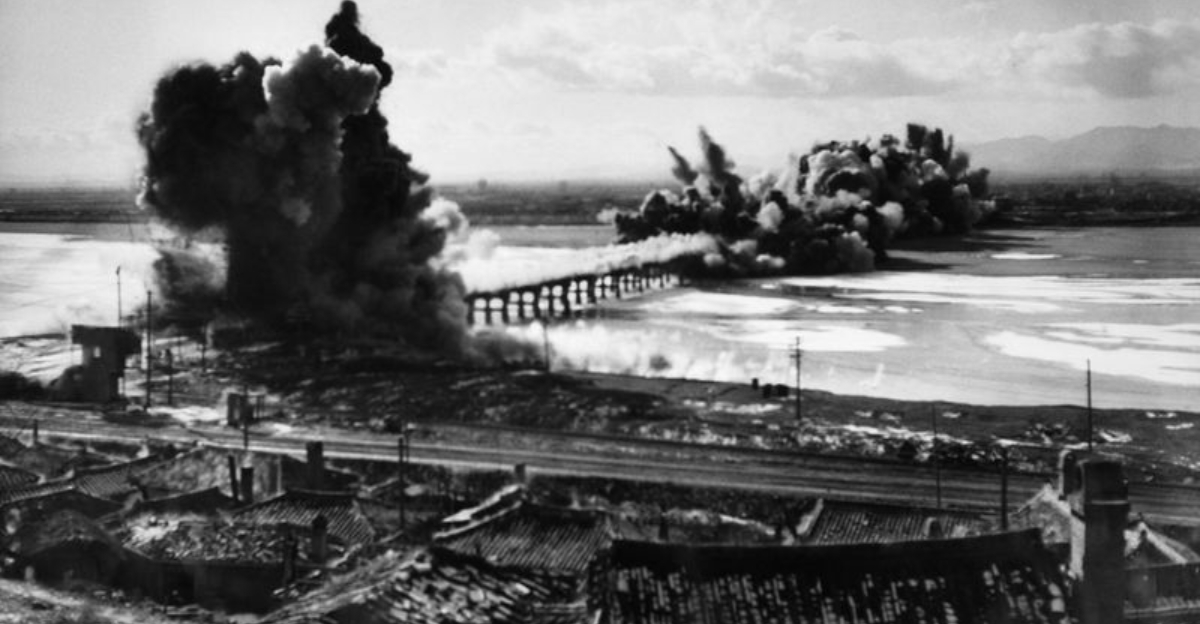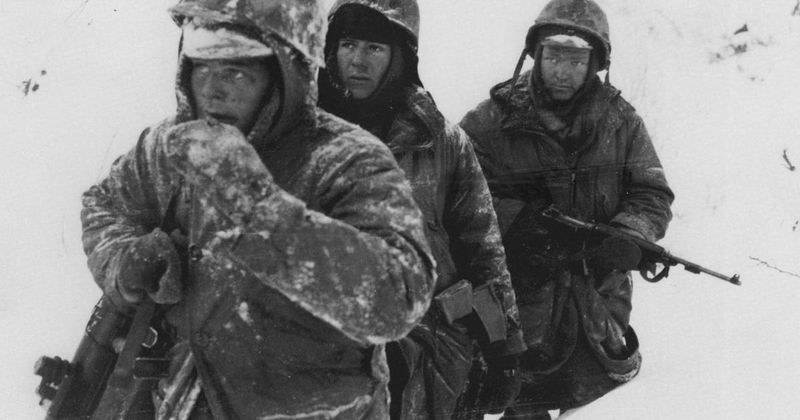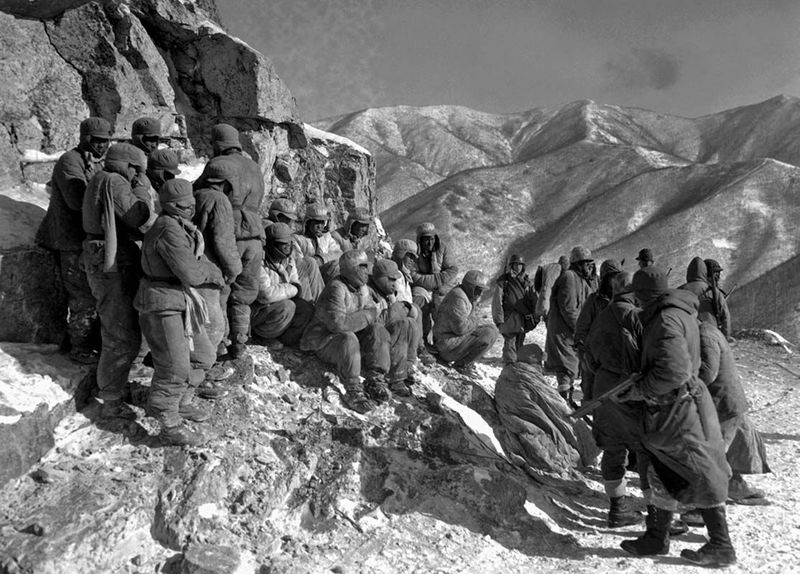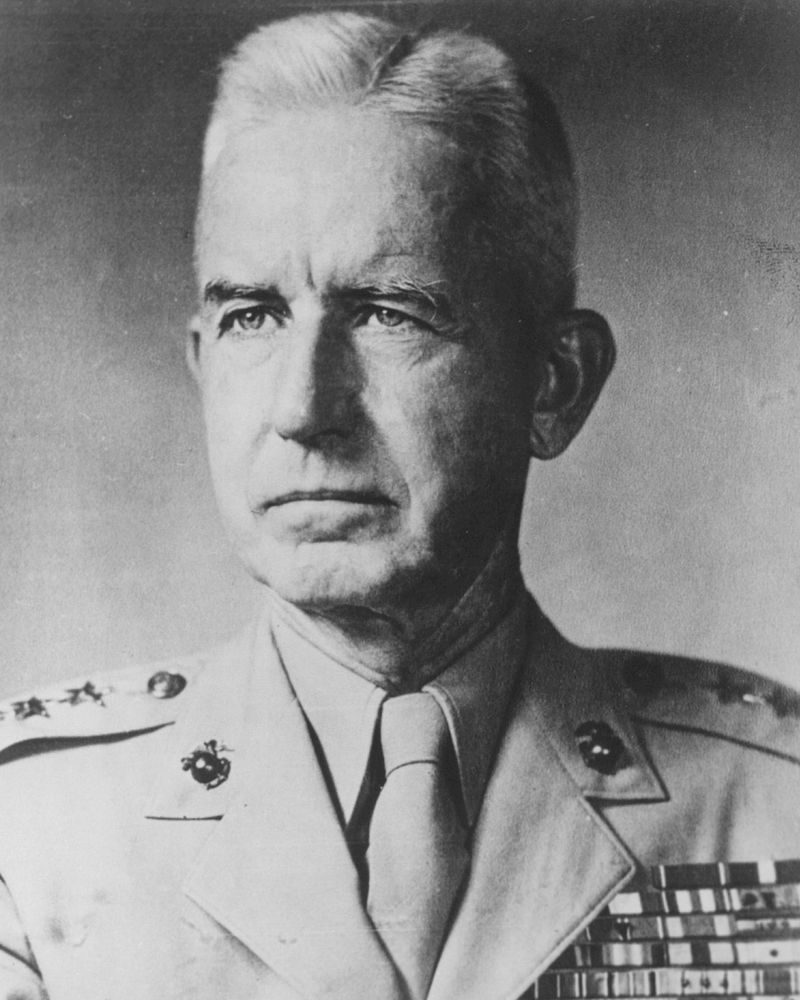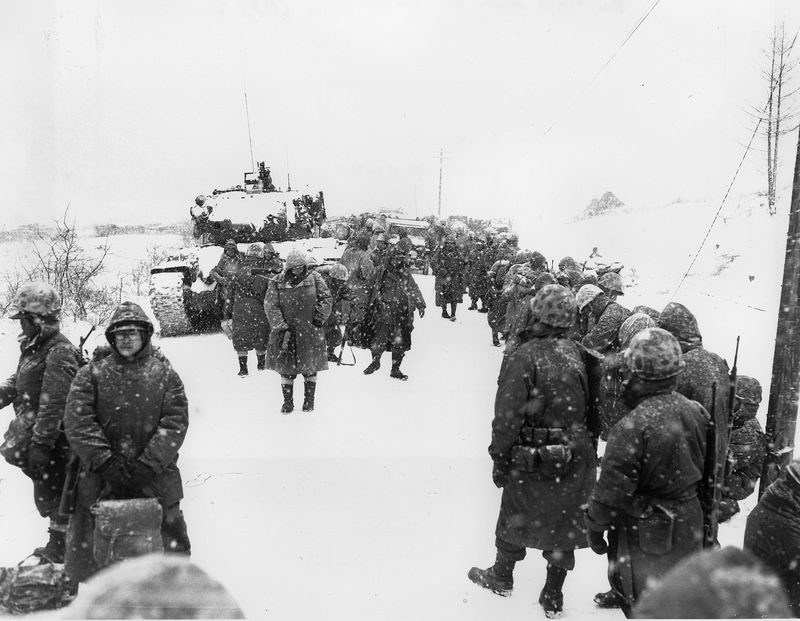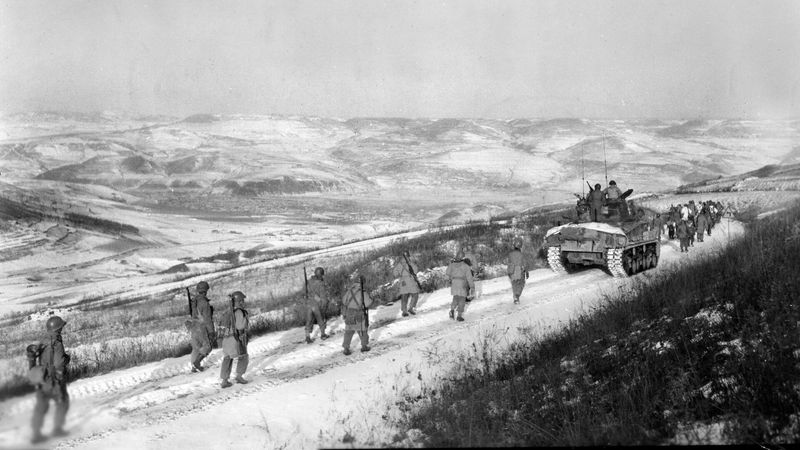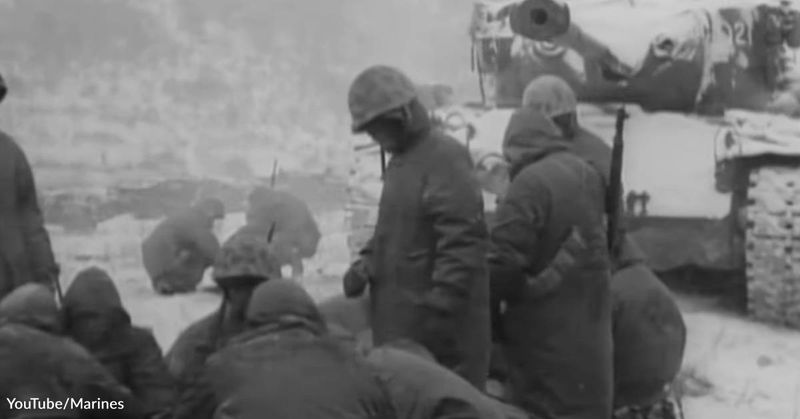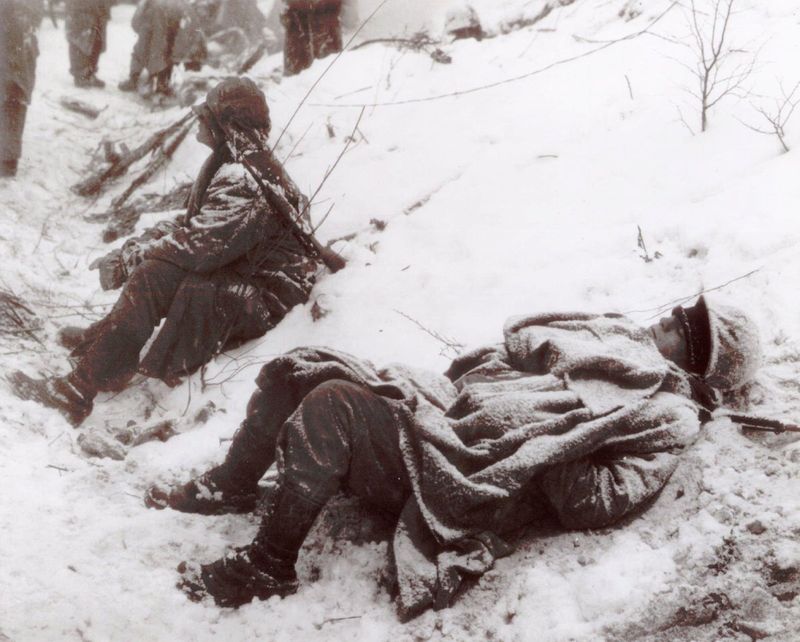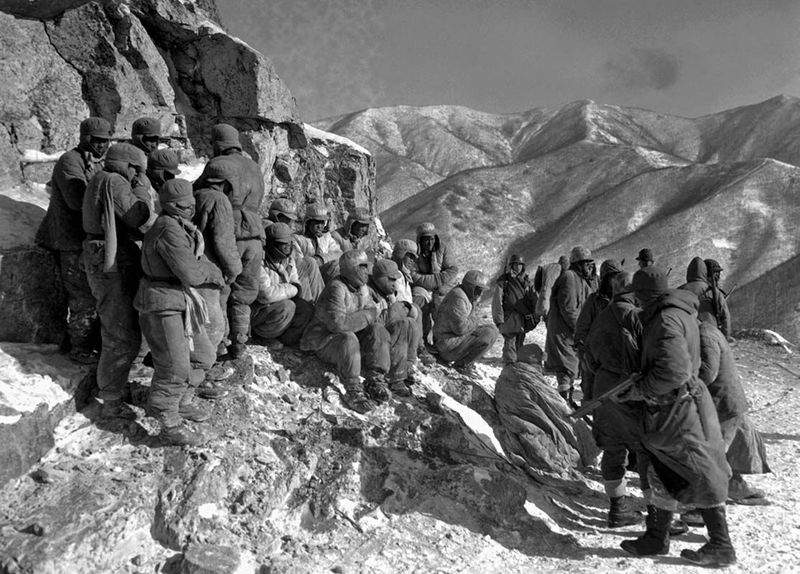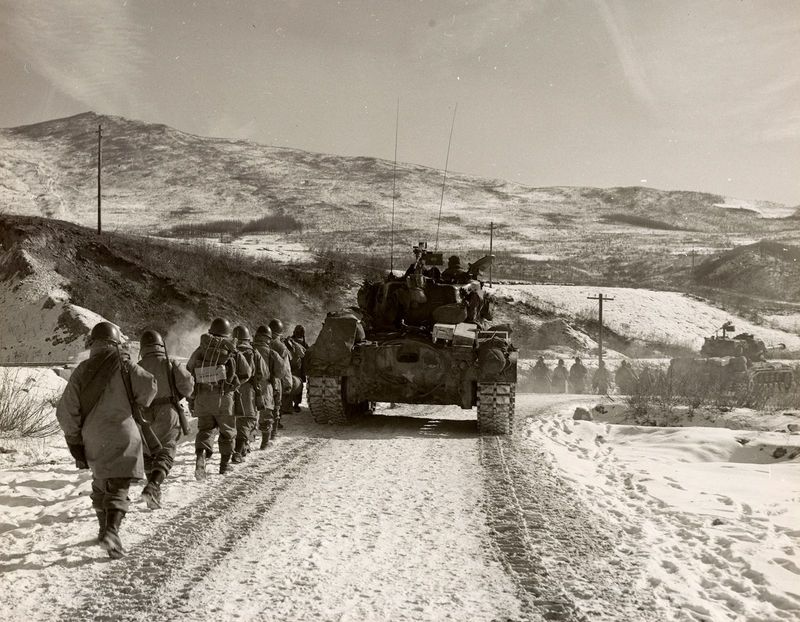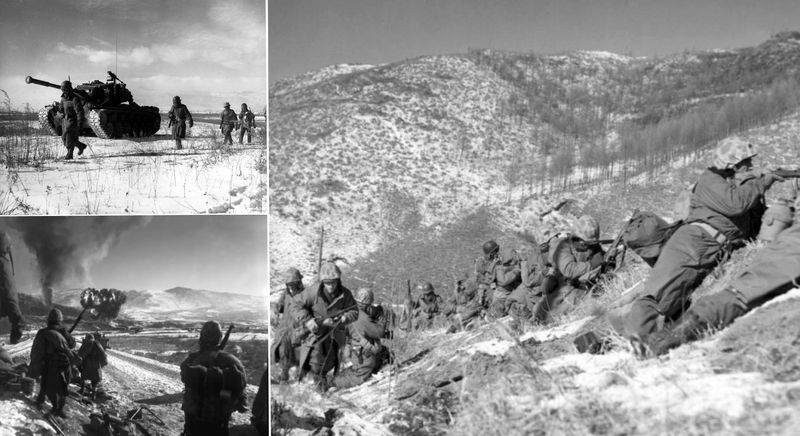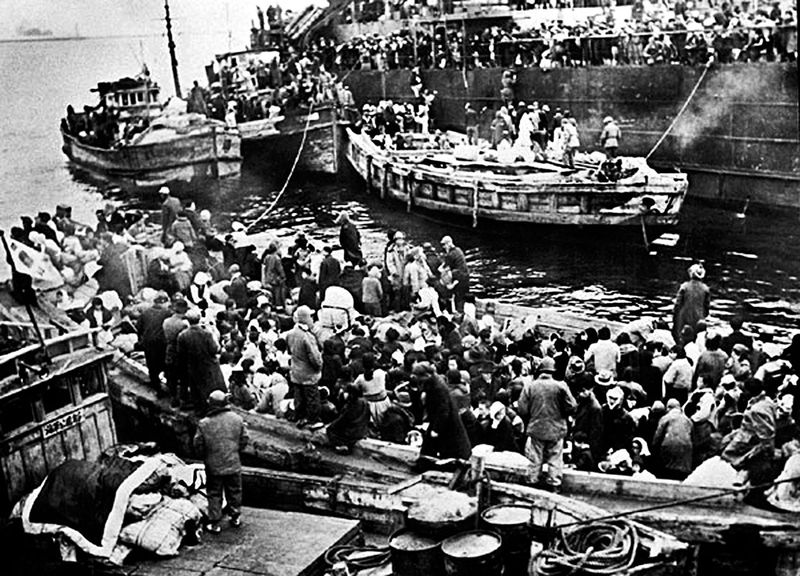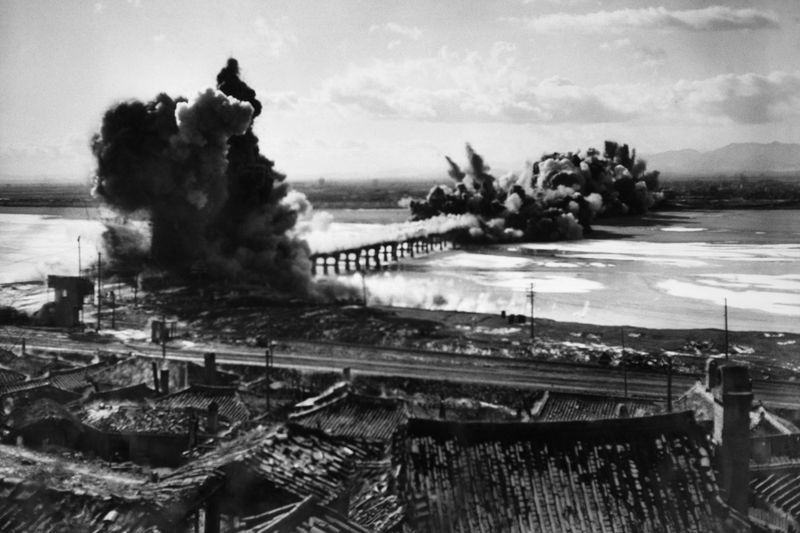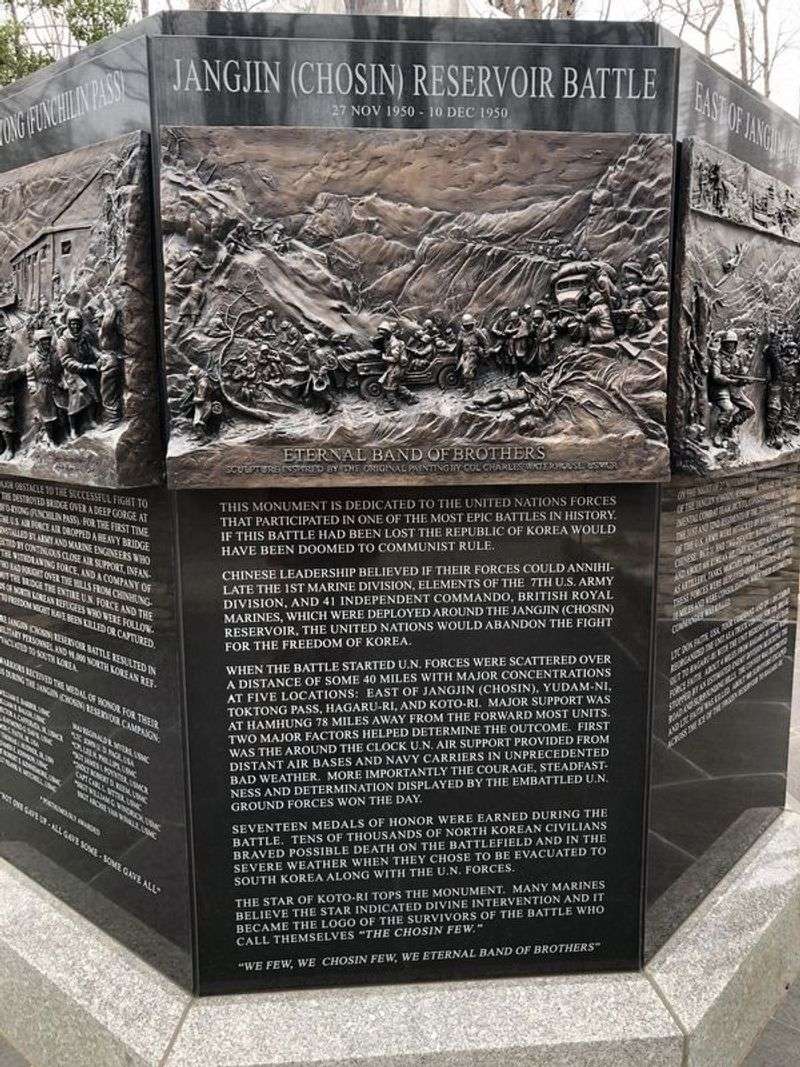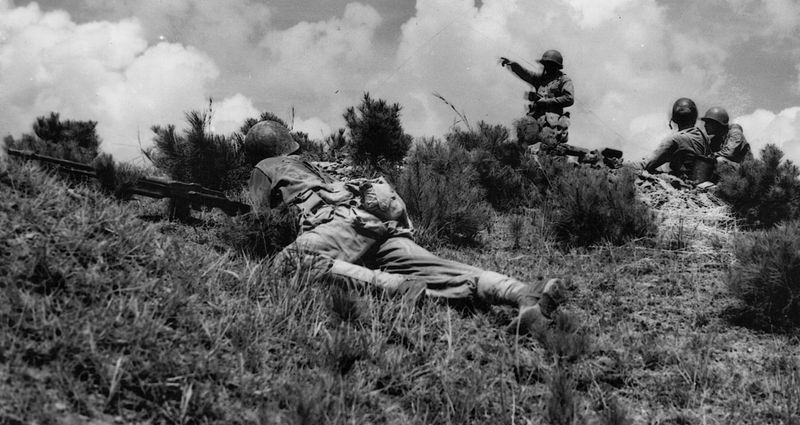The battle of Chosin Reservoir stands as one of the most legendary and daunting military engagements in U.S. Marine Corps history.
Faced with overwhelming odds, freezing temperatures, and encirclement by enemy forces, the Marines displayed extraordinary courage and resilience.
This post covers 20 fascinating facts about the pivotal event that took place during the Korean War, showcasing the bravery and tactical genius that marked this historic moment.
1. It Took Place in North Korea
The battle occurred around the Chosin Reservoir in northeast North Korea, from November 27 to December 13, 1950. Chosin Reservoir is a man-made lake nestled in the rugged mountains of North Korea. This location proved to be both a strategic goal and a treacherous battlefield for the U.S. Marines and their allies, as the terrain was as unforgiving as the enemy forces they faced.
2. The Temperatures Were Brutal
Soldiers fought in temperatures as low as -35°F (-37°C), which caused weapons to freeze and diesel fuel to gel. The biting cold was a relentless enemy, freezing not only the troops’ bodies but also their equipment. Frostbite and hypothermia became rampant, with soldiers fighting to survive the elements as much as the enemy. Their resilience in such brutal conditions remains a testament to their fortitude.
3. U.S. Troops Were Vastly Outnumbered
About 30,000 UN troops (mostly U.S. Marines and Army soldiers) faced over 120,000 Chinese soldiers who had secretly entered Korea. Despite being vastly outnumbered, the Marines exhibited exceptional combat skills and leadership. This disparity in numbers did not deter their determination, and their ability to hold their ground under such conditions is still admired in military circles for its sheer audacity.
4. China’s Surprise Attack Changed the War
The Chinese People’s Volunteer Army launched a surprise assault, shattering hopes of a quick end to the Korean War. This unexpected attack altered the strategic landscape, forcing U.N. forces into a defensive posture. The Chinese surprise became a pivotal moment, emphasizing the need for adaptability in combat and the unpredictability of wartime strategies. This shift underscored the complex nature of the conflict.
5. The Marines Were Encircled
Chinese forces surrounded U.S. troops, cutting them off from supply lines and escape routes in the freezing mountains. The encirclement was a strategic move intended to crush the Marines’ spirit. In response, the Marines fortified their positions, demonstrating defensive ingenuity. Despite the harrowing circumstances, the Marines’ unwavering resolve and teamwork enabled them to withstand the siege.
6. General Smith Refused to Retreat
Marine General Oliver P. Smith famously said, “Retreat, hell! We’re not retreating, we’re just advancing in a different direction.” This statement encapsulated the indomitable spirit of the Marines during the battle. General Smith’s leadership inspired his troops to persevere against the odds, illustrating the power of morale and determination in the face of adversity. His words continue to resonate in military lore.
7. The Breakout Was a Tactical Masterpiece
Despite being surrounded, the Marines fought their way out, taking their wounded and equipment with them during a 78-mile withdrawal. This breakout was hailed as a tactical masterpiece, showcasing the strategic planning and courage of the Marines. By maintaining discipline and cohesion, they overcame the encirclement, demonstrating the effectiveness of their training and their unyielding spirit.
8. Frostbite Claimed Thousands
More than 7,000 cases of frostbite were reported, many requiring amputations. Cold was as deadly as bullets. The harsh winter conditions led to widespread cases of frostbite, crippling many soldiers. Despite the severe conditions, the Marines continued to fight, showcasing their determination and bravery. The struggles with frostbite highlighted the challenges of winter warfare and the human cost of war.
9. Air Support Was Crucial
U.S. Air Force and Navy pilots provided close air support, dropped supplies, and attacked Chinese positions from above. The relentless air assistance was a lifeline for the ground troops, providing much-needed supplies and disrupting enemy advances. This coordination between air and ground forces was crucial in maintaining the Marines’ fighting capabilities and underscored the importance of air power in modern warfare.
10. The Army’s Task Force Faith Was Devastated
A U.S. Army unit (Task Force MacLean/Faith) suffered severe losses in the east of the reservoir, with thousands killed or captured. Their valiant efforts highlighted the extreme challenges faced during the battle, as they confronted overwhelming enemy forces. The devastation of Task Force Faith became a somber reminder of the sacrifices made and the unpredictable nature of warfare.
11. Over 15,000 U.S. Casualties
The UN forces suffered 15,000+ casualties, including dead, wounded, missing, and frostbite victims. The high casualty rate reflected the brutality of the battle and the harsh conditions faced by the troops. Each loss was a blow to the U.N. forces, underscoring the human cost of war. Despite the losses, the spirit of the Marines and their allies endured, driven by the resolve to honor those who fell.
12. The Marines Took Their Dead With Them
In a remarkable show of brotherhood and honor, the Marines refused to leave their dead behind, strapping frozen bodies to tanks and trucks. This act exemplified the deep bond between the Marines, reflecting their commitment to never leave a comrade behind. The poignant image of fallen comrades being carried home resonated deeply, symbolizing the enduring spirit of brotherhood even in the direst circumstances.
13. “The Chosin Few” Became Legends
Survivors of the battle are known as “The Chosin Few”, a badge of honor among U.S. veterans. Their incredible resilience and valor in the face of overwhelming odds cemented their place in history. The legacy of The Chosin Few continues to inspire generations of Marines, serving as a testament to the profound impact of courage and camaraderie during the Korean War.
14. The Chinese Paid a Hefty Price
Though victorious tactically, China lost an estimated 30,000 to 50,000 soldiers, many from exposure, logistics failures, and combat. The high casualty rate underscored the severe conditions and logistical challenges faced by the Chinese forces. While they achieved their tactical goals, the cost in lives was immense, revealing the harsh realities of warfare in such inhospitable environments.
15. It Changed U.S. War Strategy
The battle ended the U.S. drive toward the Yalu River and shifted the war to a defensive phase along the 38th parallel. This change in strategy marked a turning point, as the focus moved from offensive operations to fortifying positions. The lessons learned from Chosin influenced future military strategies, highlighting the need for adaptability and resilience in the face of evolving threats.
16. Reservoir Equipment Often Failed
Rifles jammed, morphine froze in syringes, and blood plasma turned to slush—soldiers had to adapt quickly to survive. The extreme cold rendered vital equipment inoperable, forcing troops to innovate and rely on their resourcefulness. These challenges emphasized the importance of preparation and adaptability in extreme conditions, showcasing the resilience of the Marines in overcoming logistical hurdles.
17. Naval Evacuation Was Heroic
After fighting their way south, U.S. forces reached the port of Hungnam, where the largest sealift evacuation since Dunkirk took place. This naval operation was a testament to strategic planning and coordination, ensuring the safe withdrawal of troops and equipment. The successful evacuation underscored the importance of naval capabilities and logistics in wartime scenarios, leaving a lasting impact on military operations.
18. It Cemented the Marines’ Reputation
Chosin is a core part of Marine Corps legend—a symbol of grit, resilience, and never leaving a man behind. The battle showcased the indomitable spirit and unwavering determination of the Marines, further solidifying their reputation as elite warriors. The legacy of Chosin continues to inspire new generations of Marines, embodying the values of courage and brotherhood that define the Corps.
19. Commemorated by Memorials
The battle is honored at the Chosin Few Memorials across the U.S., including in Virginia, California, and the National Museum of the Marine Corps. These memorials serve as poignant reminders of the sacrifices made and the enduring legacy of the Marines who fought at Chosin. They stand as symbols of remembrance, ensuring that the bravery and sacrifices of The Chosin Few are never forgotten.
20. Still Taught in Military Academies
Chosin is studied in military history and leadership courses as an example of bravery, tactical withdrawal, and survival under impossible conditions. The lessons gleaned from this battle continue to inform military strategy and leadership training, emphasizing the importance of adaptability, courage, and strategic planning. Its enduring relevance highlights the timeless nature of the lessons learned at Chosin.
